Daimyo Kaikyu Ken Unokubi Zukuri Katana Oroshigane Folded
₱75,000.00
1 in stock
Daimyo Kaikyu Ken Unokubi Zukuri Katana Oroshigane Folded (Daimyo Class Sword)
The Unokubi Zukuri Katana, as the name implies, has an unokubi zukuri blade shape. The term unokubi translates to “cormorant’s neck”. It refers to the tapering of a portion of the back of the blade giving it a false edge, while retaining the shape of the kissaki. The blade has a small groove called “soe-hi” that runs along the shinogi or ridge line of the blade. It also has a “koshi-hi” which is a short groove with an angled top. The koshi-hi usually suggests the sword of Fudo Myoo. It’s meaning is the same as the “Ken” horimono (engraving) which is the symbol of power of Buddha (or any Buddha). It’s the most simple symbol of prayers. A koshi-hi with a longer soe-hi suggests a Buddha with his polearm.
The blackend iron tsuba is a sukashi (open-work) with the mitsudomoe symbol, which is associated with Shintoism and martial arts. It represents harmony and balance between heaven, earth, and humanity in Shinto beliefs, while in martial arts, it signifies unity of mind, body, and spirit. Additionally, it is seen as a symbol of protection and transformation, embodying spiritual and philosophical concepts such as unity, balance, and the cyclical nature of existence.
The brass habaki is nickel plated and features yoko-yasuri style (decorative file marks). The saya features a kuro-ishime (black textured) finish that matches the finish of the fuchi, kashira, and kojiri.
SPECIFICATIONS
• Blade Material: Oroshigane
• Blade Polish: Sashikomi style
• Edge: Fully sharpened
• Treatment: Hand Forged, Folded, Differentially Hardened, Heat Treated & Tempered, Water Quenched
• Overall Length w/o saya: 38.75 inches
• Blade Length: 27 inches
• Tsuka: 10.5 inches wood wrapped with hishigami
• Saya: 30 inches wood kuro-ishime finish
• Koiguchi / Kurikata: Buffalo horn
• Tsuba: Blackened iron
• Fuchi / Kashira / Menuki / Kojiri: Blackened brass
• Habaki / Seppa: Nickel plated brass
• Tsukaito: Black silk imported from Japan
• Sageo: Black silk kakucho sageo imported from Japan
• Mekugi: 1 bamboo peg
• Samegawa: Real ray skin panels
• Nakago: Full tang
• Hamon: Real/natural “midare”(irregular) pattern
NOTES
• Specs may vary slightly from sword to sword
• Can be disassembled
• Includes silk sword bag
• Packaging: carton box
Oroshigane is a steel produced and/or refined by the swordsmiths themselves, which can be steel from old nails, old iron gates, old swords, etc.
Sashikomi style is the classical style of blade polishing. The hamon is left natural and the blade is not shining like the modern style of polishing, but all the appearances of the steel come up. Sashikomi is a little more difficult to do than a Kesho finish.




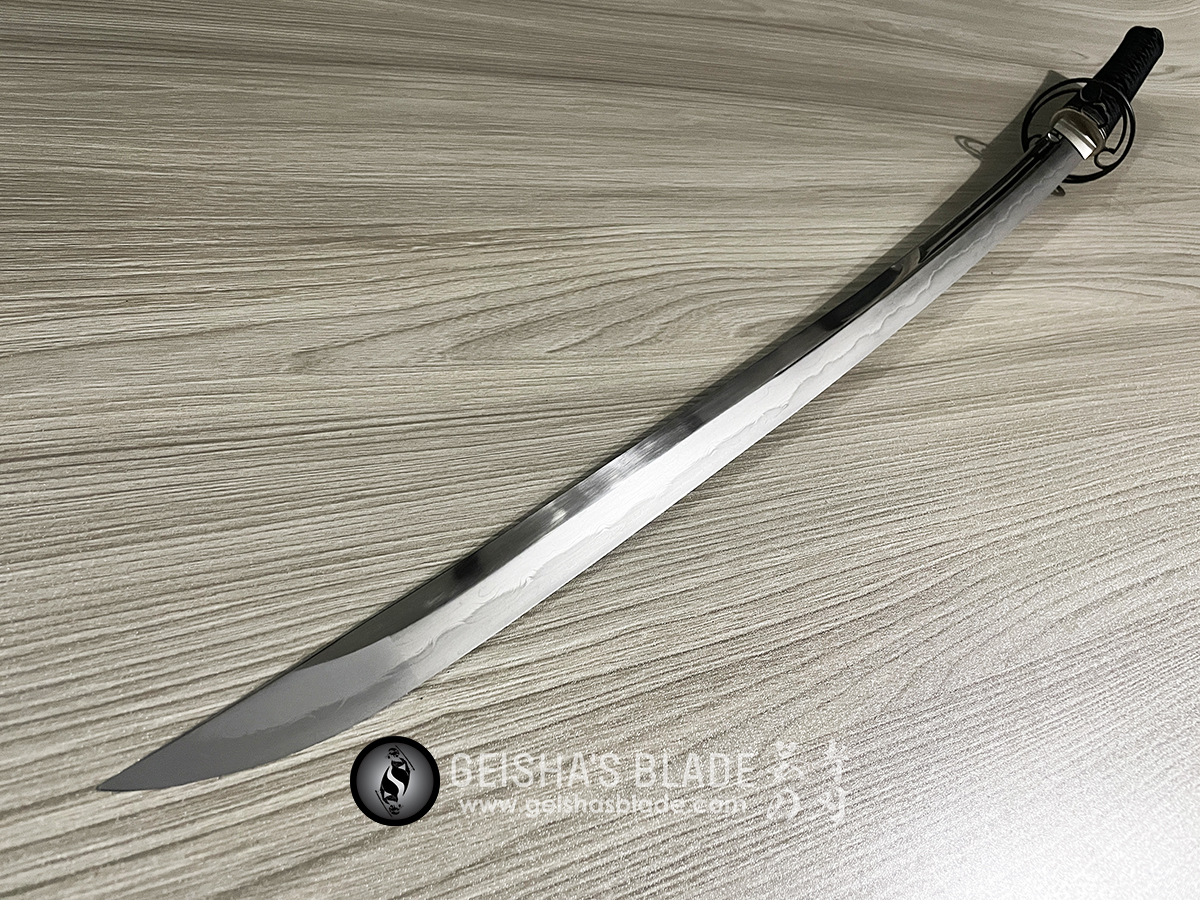




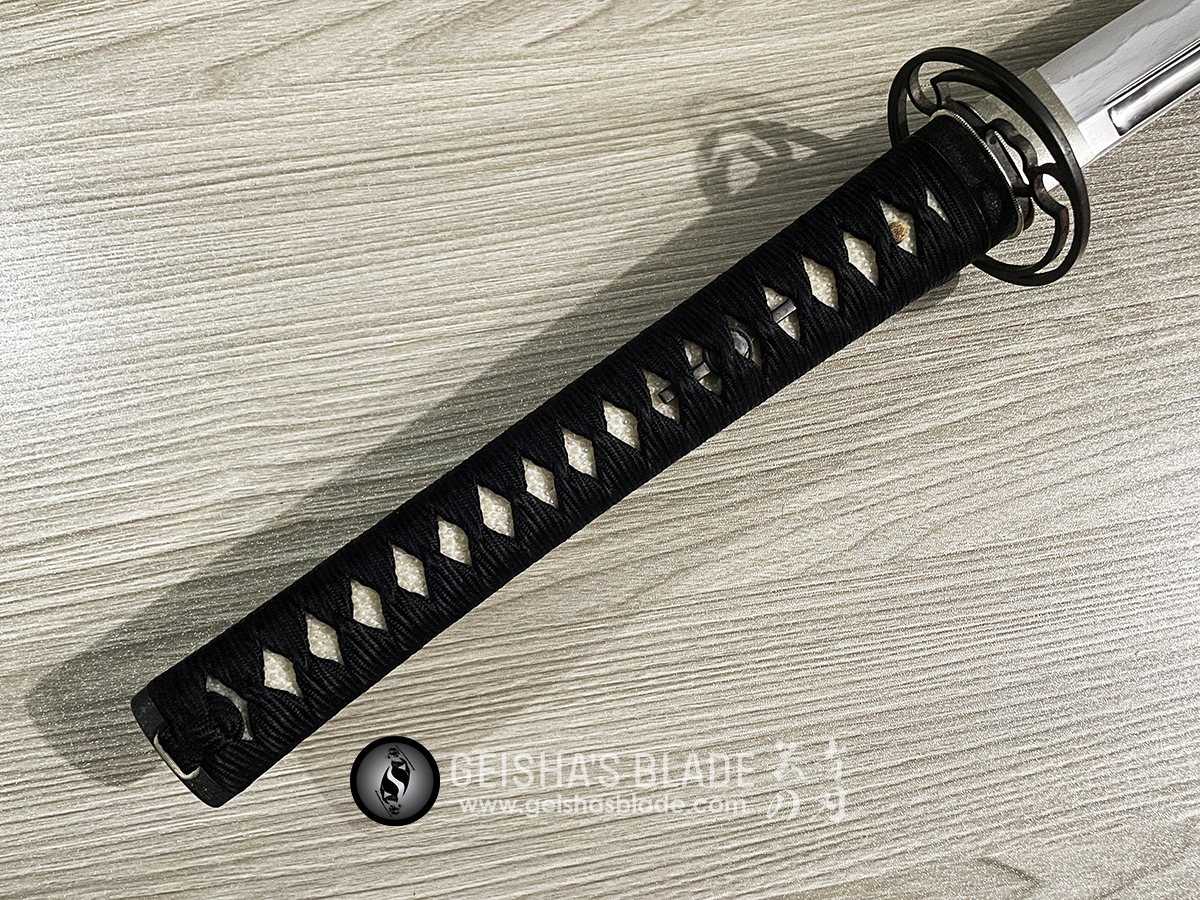


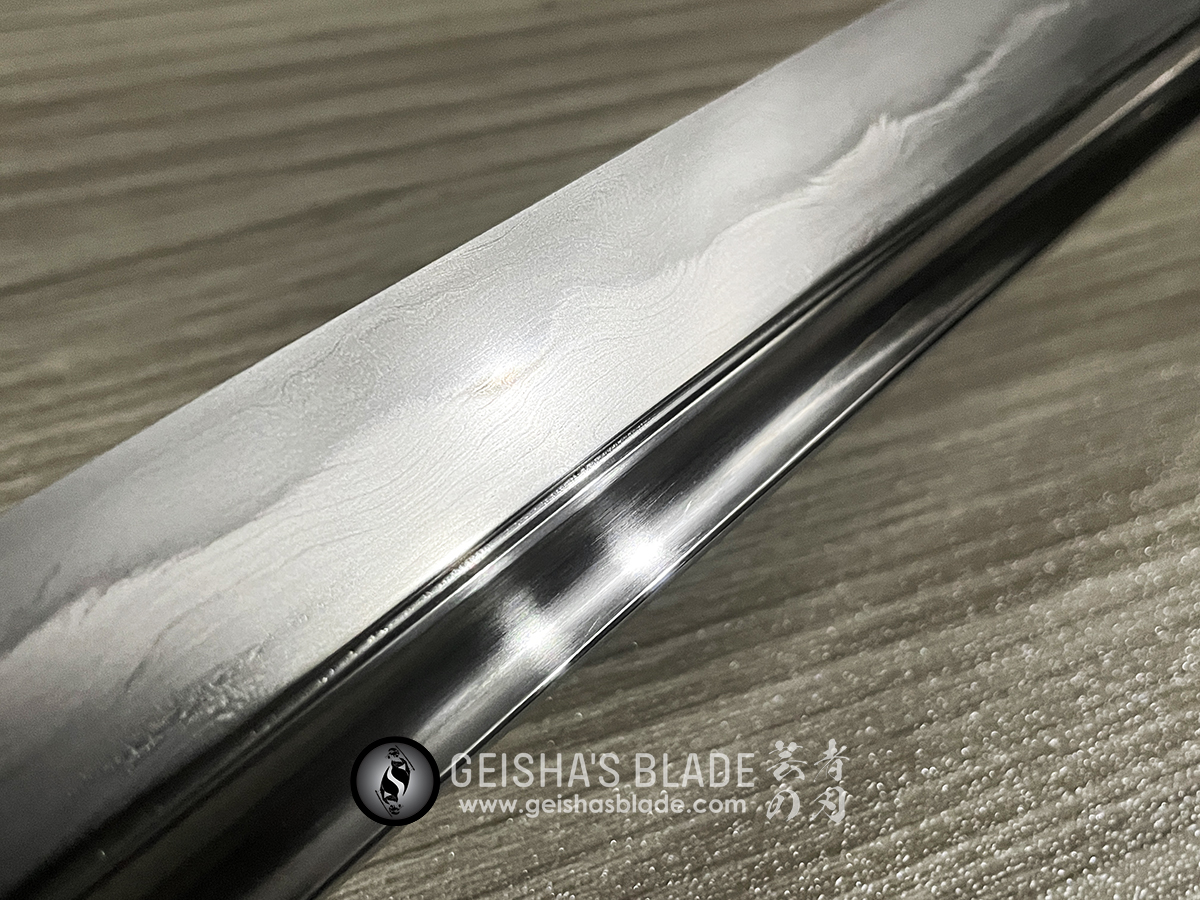






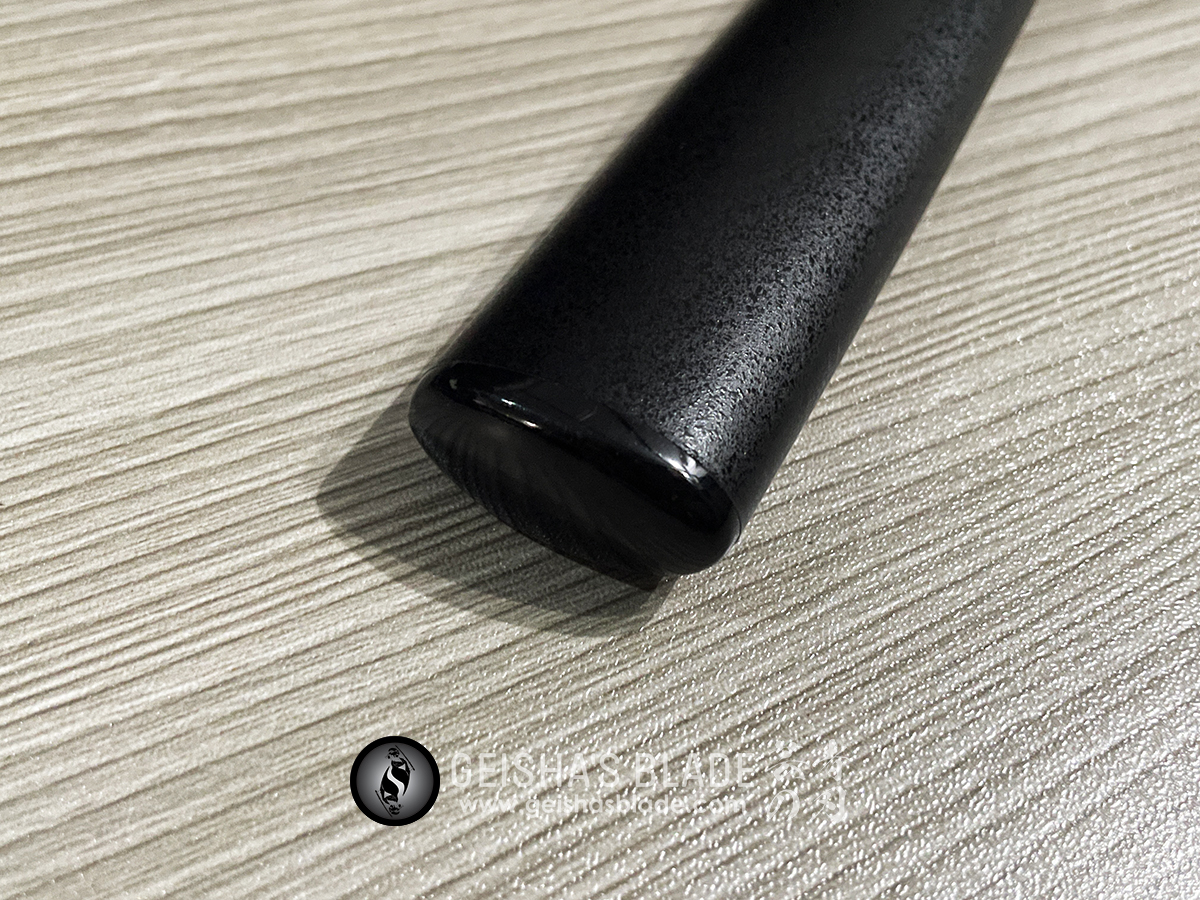













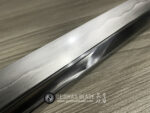
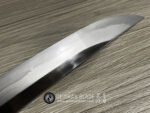








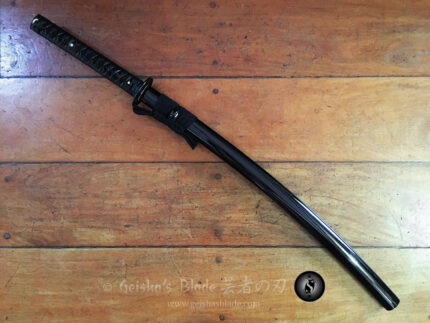



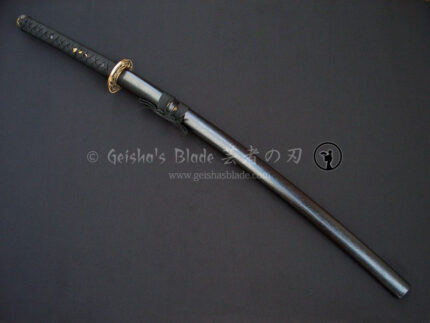






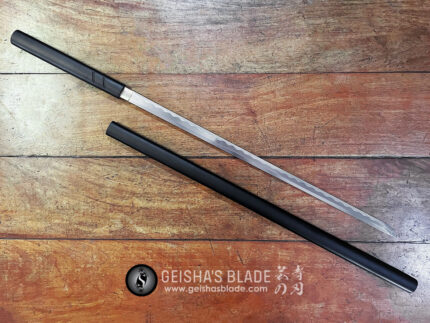
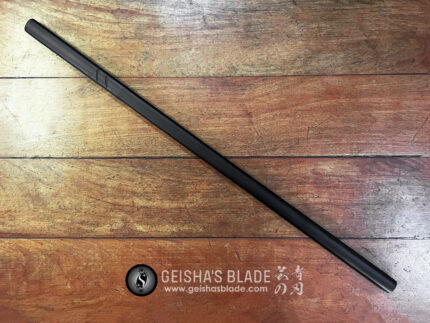


Reviews
There are no reviews yet.